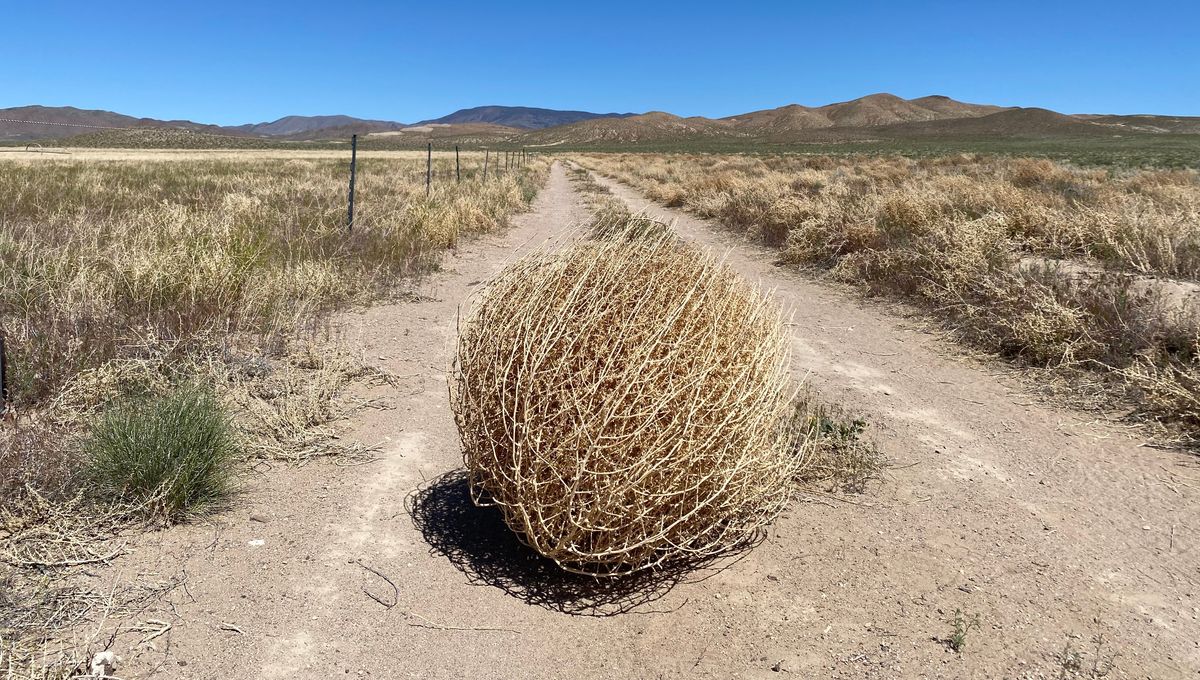
Most of us will have seen a tumbleweed. Well, not necessarily in real life, but as a long-standing prop in cowboy movies, or in your brain when someone asks you a question during a Friday afternoon meeting. We know what they look like – but do you know what they actually are?
TikTok user whatsinthekoolaid was shocked to find out that they are not in fact made up of sticks, as were several other people in the comments of a video captioned “everything is a lie” – an understandable description under the circumstances.
“I was under the impression that tumbleweeds were like collections of sticks on the road that just kind of found each other and then rolled around like a desert snowball, like an outside dust bunny,” said the TikTok creator.
Others who commented on the video thought the same, while some even said that they didn’t know tumbleweeds were even real.
But as the video goes on to explain, tumbleweeds are in fact very real, but they aren’t a spherical mass of stuck-together sticks – they’re plants.
Many different plant species can be considered tumbleweeds, but the one best known to the US is the Russian thistle (Salsola tragus), which begins its life very much rooted into the ground. It then grows into a large, round shape that looks a bit like a prickly green bush.
As the plant ages, it becomes weak near its base and, eventually, breaks off. Then, with a gust of wind, the Russian thistle dies, but a tumbleweed is born.
That’s not the end of the story, however. Yes, the plant is technically dead, but the tumbleweed is about to ensure the survival of the species; the characteristic behavior of roly-polying with reckless abandon is actually a seed dispersal technique.
As the tumbleweeds rolls and bounces along the ground, pushed by the wind, its seeds are left behind on the ground, germinating with far less complex requirements than many plants.
Given the Russian thistle can produce and carry in the region of 20,000 to 250,000 seeds, this makes for a rather effective way of having surviving offspring in large numbers, and given that the wind can take tumbleweeds pretty much anywhere, far and wide too.
That’s great news for the Russian thistle – but not so much in other ways. Not only is it considered to be an invasive species in the US, having been accidentally introduced in the 1870s, but the lack of control over where it goes can end up being a fairly massive pain in the ass.
“Tumbleweed tornados” – tumbleweeds caught up in dust devils – can cause visibility problems on roads, and attempting to get rid of the pests by burning them can end up with the same thing but with the added pizzazz of fire.
They can also get more than just a bit in the way, as residents of towns in Utah and Nevada found out earlier this year when high winds brought literal stacks upon stacks of tumbleweeds into the streets, in an incident appropriately dubbed “Tumblemageddon”.
Source Link: Tumbleweeds Might Not Be What You Think They Are